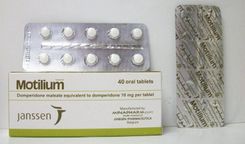Pharmacist, PhD Phan Quynh Lan, Director of Pharmacy at Vinmec Healthcare System and Head of Pharmacy Department at Vinmec Times City International General Hospital, conducted a professional consultation on the article. Pharmacist Lan has many years of experience in the field of Clinical Pharmacy, having served as a lecturer in the Department of Clinical Pharmacy at Hanoi University of Pharmacy.
Paracetamol is often used to treat pain and fever, and it is thought to be safe for everyone, even children. When giving the drug to young children, however, you need a prescription and advice from a doctor because an overdose of paracetamol can cause serious problems or even death.
1. What is paracetamol?
Acetaminophen, also known as paracetamol, is an active ingredient that aids in pain relief and fever treatment, treating symptoms such as headaches, muscle pain, arthritis, backaches, toothaches, colds, and fevers. The drug only relieves pain in cases of mild inflammation but has no effect on severe inflammation, such as myositis.
Paracetamol is used for adults, children, and pregnant women. However, pregnant women and children need a doctor's prescription to use paracetamol; they should not purchase the drug on their own to prevent side effects from an overdose.
The drug is not recommended in cases of pain due to inflammation because the drug does not have an anti-inflammatory effect. Paracetamol use can lead to some of the following allergic reactions:
- Allergy and skin rashes
- Mouth pain, fever, and dyspnea
- Nausea, weight loss, loss of appetite
- Jaundice, yellow eyes.
If any symptoms occur when using paracetamol, stop taking it and see a doctor immediately.
2. Recommended dose of paracetamol for children

Paracetamol for kids is usually made in powder sachets, syrups, and suppositories, each containing 80 mg, 150 mg, 250 mg, or 300 mg of the drug in them:
- Powder sachets often have the aroma of fruits and have a sweet taste that is very suitable for children; they will not be afraid when using them. It is very convenient when children have a fever; just mix the medicine with water and give it to the child to drink.
- The syrup form comes in a variety of flavors, making it easier for children to take medicine, and it has a similar fever-reducing effect to the powder sachet form.
- Suppositories are used when children have a fever and cannot drink, vomit, or have convulsions, or when the child is sleeping and parents do not want to wake them up.
The usual dose of paracetamol is 10-15 mg/kg for one dose and a maximum of 60 mg/kg in one day. Take no more than 4–6 times a day, with a minimum interval of 4 hours between doses. When giving children paracetamol, it is necessary to follow the safe interval between two doses; otherwise, the child will overdose on paracetamol.
If the child's fever exceeds 38.5 degrees Celsius, as measured by an armpit thermometer, it is advisable to administer medication to lower the temperature. Children with liver disease or jaundice due to biliary obstruction should not use medication at home.
When using paracetamol, if the child shows signs of fatigue, digestive disorders (such as diarrhea, vomiting), or lethargy, it is necessary to stop taking it immediately and take the child to the doctor for monitoring and treatment.
3. What happens when children overdose on paracetamol?
Paracetamol overdose in children can lead to paracetamol poisoning. The reasons are:
- When their children have a persistent fever that does not subside, many people give them paracetamol multiple times in a short period of time to reduce the fever.
- Taking many medicines that contain paracetamol at the same time.
- Using the medicine for a long time.
- Administering a too high dosage
Symptoms of paracetamol overdose in children:
Case 1: (Within 24 hours after overdose)
Children stop breastfeeding, lose appetite, nausea, vomiting, and abdominal pain. After taking an overdose, the child gets feeble and goes into a coma.
Case 2: (Within 24-72 hours after overdose)
A child suffering from severe paracetamol poisoning will initially exhibit agitation and delirium. This is followed by central nervous system depression such as hypothermia, fatigue, rapid and shallow breathing; rapid, weak, irregular pulse; low blood pressure; and circulatory failure.
Case 3: (Within 72-96 hours)
Followed by a rapid increase in liver enzymes, the child is at risk of liver and kidney damage, respiratory failure, circulatory failure, and even death if not intervened promptly.

4. Preventing paracetamol overdose in children
Doctors advise parents to take their children to the hospital for an examination if they have had a fever for more than three days, if fever-reducing medications are ineffective, if they are allergic to the treatment, or if their temperature is 40–41 degrees Celsius. Parents should keep the medicine in a locked cabinet, out of children's sight and reach.
Pregnant or breastfeeding women must consult a doctor or pharmacist when taking medication, because some drugs can enter breast milk and cause poisoning in breastfed infants.
Use medication only as prescribed by a doctor; do not buy additional medication for children on your own. When using medication, read the ingredients carefully to avoid using multiple types with the same active ingredient. These ingredients are usually listed at the top of the medication label. Read the instructions carefully before use and use the correct dose according to the recommendations on the medication label and the instructions of the doctor/pharmacist.
Use the provided dosing device, such as a dropper, cup, spoon, etc. Do not use other measuring tools, such as kitchen spoons, as they may provide the wrong dose of medication. Never drink liquid medication directly from a bottle or vial.
Check the medication three times before use. This practice is always necessary for any medication. First, check the outer packaging to see if it is intact. Second, check the label on the inner packaging to make sure you are taking the correct medication. Third, check the color, shape, size, and smell of the medication. If you notice anything unusual, stop taking the medication.
Shake the bottle of liquid paracetamol before use. Chewable tablets should be chewed properly before swallowing. Your hands should be dry before handling disintegrating paracetamol tablets.
When children have symptoms of paracetamol overdose or have worsening symptoms such as red skin or swelling in the painful area, rash, headache, nausea, or vomiting, call the emergency center 115 immediately or transfer the child to the hospital for treatment as soon as possible.
As a key area of the Vinmec Healthcare system, the Pediatrics Department always brings satisfaction to customers and is highly appreciated by experts in the industry with:
- Gathering a team of pediatricians: including experts with high professional qualifications (professors, associate professors, doctors, masters), rich in experience, having worked at major hospitals such as Bach Mai, 108... The doctors are all well-trained, professional, dedicated, and knowledgeable about children's psychology. In addition to domestic pediatricians, the Pediatrics Department also has the participation of foreign experts (Japan, Singapore, Australia, USA) who are always pioneers in applying the latest and most effective treatment regimens.
- Comprehensive services: In the field of pediatrics, Vinmec provides a series of continuous medical examination and treatment services from newborn to pediatrics and vaccines, according to international standards to help parents take care of their children's health from birth to adulthood.
- Specialized techniques: Vinmec has successfully deployed many specialized techniques to help treat difficult diseases in pediatrics more effectively: neurosurgery, skull, and hematopoietic stem cell transplantation in cancer treatment.
- Professional care: In addition to understanding children's psychology, Vinmec also pays special attention to the children's play space, helping them play comfortably and get used to the hospital environment, cooperate in treatment, and improve the effectiveness of medical examination and treatment.
Please dial HOTLINE for more information or register for an appointment HERE. Download MyVinmec app to make appointments faster and to manage your bookings easily.














